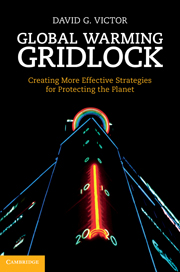Book contents
- Frontmatter
- Contents
- List of figures
- List of tables
- Preface and acknowledgements: a journey studying international environmental regulation
- Hard truths about global warming: a roadmap to reading this book
- Part I Setting the scene
- 1 Introduction and overview
- 2 Why global warming is such a hard problem to solve
- Part II The three dimensions of climate policy strategy
- Part III Putting it all together
- Notes
- References
- Index
1 - Introduction and overview
from Part I - Setting the scene
Published online by Cambridge University Press: 05 June 2012
- Frontmatter
- Contents
- List of figures
- List of tables
- Preface and acknowledgements: a journey studying international environmental regulation
- Hard truths about global warming: a roadmap to reading this book
- Part I Setting the scene
- 1 Introduction and overview
- 2 Why global warming is such a hard problem to solve
- Part II The three dimensions of climate policy strategy
- Part III Putting it all together
- Notes
- References
- Index
Summary
In the late 1980s the United Nations began the first round of formal talks on global warming. Over the subsequent two decades the scientific understanding of climate change has improved and public awareness of the problem has spread widely. These are encouraging trends. But the diplomacy seems to be headed in the opposite direction. Early diplomatic efforts easily produced new treaties, such as the 1992 UN Framework Convention on Climate Change (UNFCCC) and the 1997 Kyoto Protocol. Those treaties were easy to agree upon yet had almost no impact on the emissions that cause global warming. As governments have tried to tighten the screws and get more serious, disagreements have proliferated and diplomacy has stuck in gridlock.
This book aims to explain the gridlock and offer a new strategy. My argument is that the lack of progress on global warming stems not just from the complexity and difficulty of the problem, which are fundamental attributes that are hard to change, but also from the failure to adopt a workable policy strategy, which is something that governments can change. Making that change will require governments, firms, and NGOs that are most keen to make a dent in global warming to rethink almost every chestnut of conventional wisdom. In this opening chapter, I will summarize my argument in six steps.
Step 1: why the science of global warming matters
Any serious effort to slow global warming must start with one geophysical fact. The main human cause of warming is carbon dioxide (CO2).
Information
- Type
- Chapter
- Information
- Global Warming GridlockCreating More Effective Strategies for Protecting the Planet, pp. 3 - 29Publisher: Cambridge University PressPrint publication year: 2011
